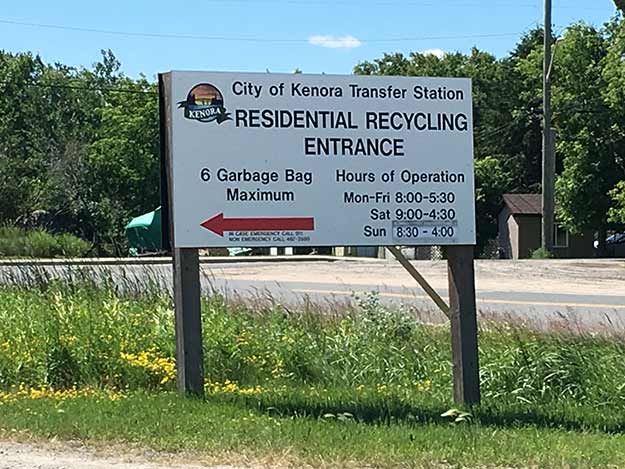
I went on vacation to Canada a few weeks ago with my boyfriend’s family. His parents are retired and recently bought a house there to spend their summers, so we got a little bit more of a residential experience than one might normally get on a trip abroad.
His parents shared little tidbits about acclimating to life in Canada, including the robust waste sorting system they set up at the house to comply with the country’s recycling program. We even got to ride along with my boyfriend’s dad when he took the trash and recycling into town to drop it off at the solid waste transfer station. It was basically Christmas for a recycling nerd like me.
The first thing that struck me was that trash and recycling were accepted at the same station. It also struck me that everyone had to drive their waste to this station, rather than it being picked up from their homes. However, we were in a pretty rural part of Canada, so this probably isn’t true in more populated areas.
In addition to accepting typical household recyclables, the facility had sections for all kinds of specialty items I wouldn’t know how to recycle in the U.S.: tires, propane tanks, cooking oil, and even a “reuse” area where you can drop off large items for a $2 fee and anyone else can take them home for free.
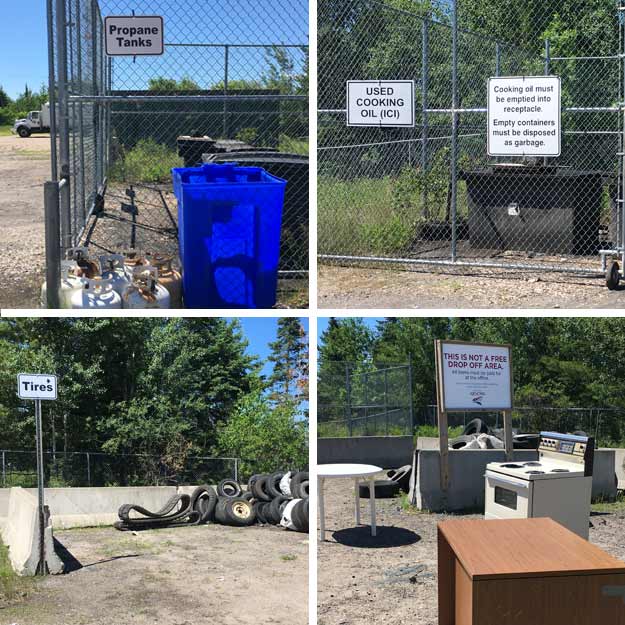
The standard recycling area was similarly separated, with different dumpsters for paper, cardboard, plastic & cans, and glass.
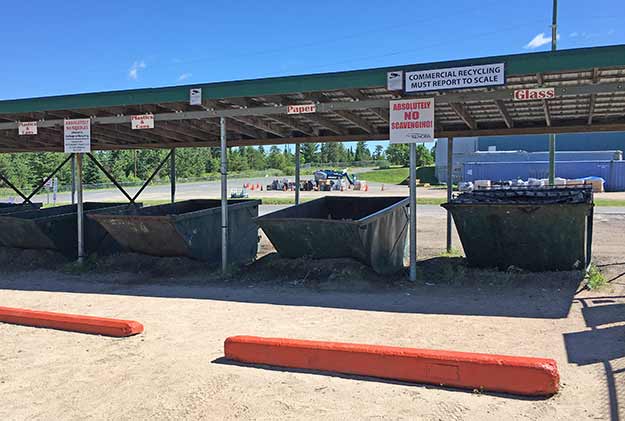
The recycling area was equipped with several large, detailed signs specifically describing what can and can’t be recycled. I would love to see more informative signs like these at recycling stations in the U.S.
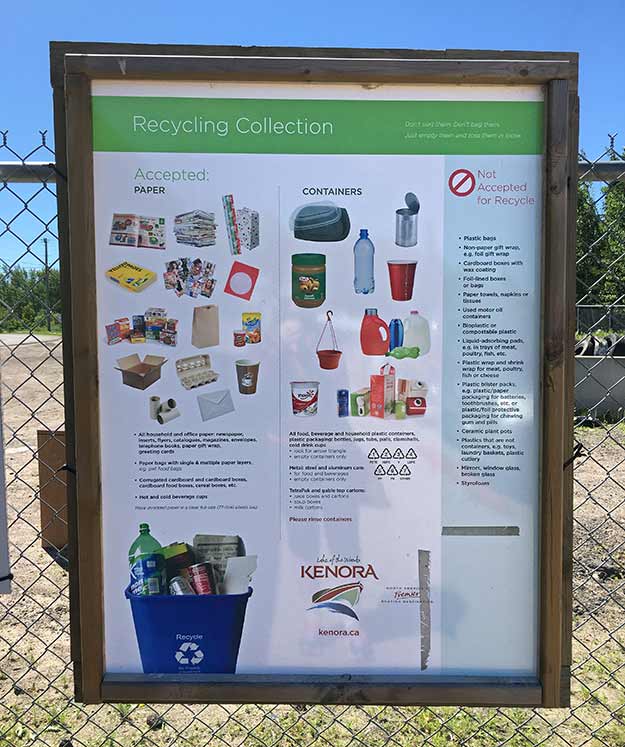
The only piece missing from the recycling station was a food waste compost receptacle (they accepted yard waste for composting but not food scraps). Also, they had a bin/baler for recycling plastic bags, but it was out of service when we visited.
It’s free to drop off recycling at the transfer station, but each bag of trash costs $2, which you pay for by purchasing red trash stickers. There was only one small trash dumpster at the entire facility, and it wasn’t even close to full. Residents are limited to dropping off a maximum of 6 trash bags per visit.
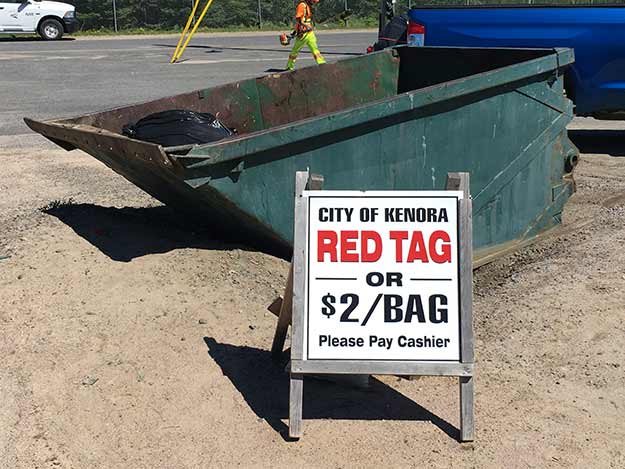
One question I wish I had asked is how they enforce correct recycling and discourage contamination. My concern with promoting a pay-for-trash model in the U.S. is that it could incentivize people to put their trash in the recycling dumpsters so they don’t have to pay for it. There was one staff member at the recycling station, but she was in a little vestibule, and I didn’t notice anyone actively monitoring the bins for contamination. Maybe because the bins were segregated by material type it’s easier for their processing facilities to pull out contamination when it does occur.
The transfer station accepts hazardous waste once a week, unlike many parts of the U.S. where “tox drop” days happen only a few times a year. They even have a corner of the parking lot with free mulch for anyone to take (“please limit yourself to 2-3 pails,” the sign requests politely).
I pretty much fell in love with the solid waste transfer station. However, recycling was prevalent everywhere we went. There were readily available recycling bins around downtown and in shopping centers. This beauty greeted us outside a Walmart right after we crossed the border.
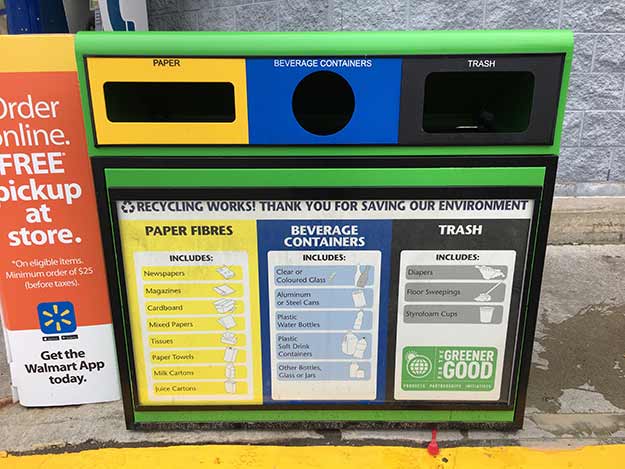
Again with the helpful lists of accepted materials! Canada knows how to do recycling education.
I loved getting an up-close look at how our neighbors to the north do recycling. While I’m intrigued by the idea of a pay-for-trash system, what I’d really love the U.S. to adopt from this example is more descriptive educational signs on recycling bins. Many people are confused about what to recycle, to the extent that China has stopped importing all plastic recyclables from the U.S. because they were too contaminated with garbage. This confusion affects many people I know who are trying to recycle correctly. Other people who don’t have a lot of mental energy to dedicate to recycling are likely even more befuddled.
What does your town’s recycling system look like? Is there anything from the Canadian system you wish your facility had?

I cannot find a guide. AFAIRTRADEWORLD is not on the guide??
We were called A Fair World.
Thanks.
Hi Linda, as of early 2014 we are no longer actively maintaining our directory. Sorry if we missed including you before then!
It’s Aliiiive! My Passion Project to Make Secondhand Shopping Faster & Easier |
[…] It’s been a minute! I’ve been up to a few different things since my last update about the beauty that is the Canadian recycling system: […]